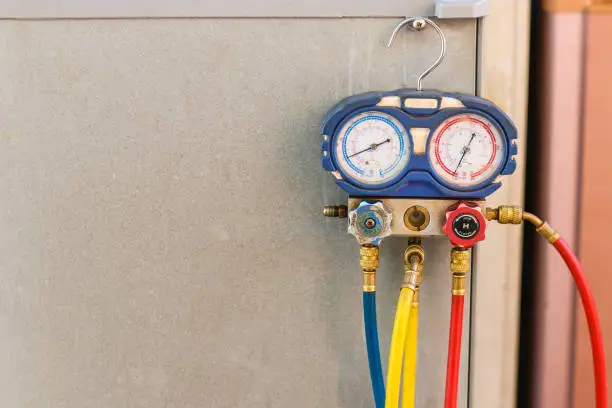A refrigerator relies on refrigerant gas to keep food cool. Over time, due to leaks or wear, the gas level may decrease, causing inefficient cooling or complete failure. Refilling fridge gas requires technical knowledge, the right tools, and safety precautions. While professionals typically handle this process, understanding the steps can help determine when a refill is necessary and whether to seek expert assistance. Here is how to refill fridge gas.
Signs Your Fridge Needs a Gas Refill
Before refilling the refrigerant, check for common signs of low gas levels:
- The fridge is not cooling despite the compressor running
- Unusual hissing or bubbling noises, indicating a possible gas leak
- Ice buildup in unexpected areas due to improper cooling cycles
- The compressor runs continuously without maintaining temperature
- Higher electricity consumption due to inefficient cooling
If you notice these issues, confirm the problem by checking for leaks or consulting a technician before proceeding with a refill.
Required Tools and Materials
To refill the refrigerant, the following tools are essential:
- A compatible refrigerant gas (R134a, R600a, or as specified by the manufacturer)
- A refrigerant charging kit with a pressure gauge
- A piercing valve or access valve to connect the gas
- A vacuum pump to remove air and moisture from the system
- Protective gloves and safety goggles to prevent exposure to harmful substances
Steps to Refill Fridge Gas
- Identify the Refrigerant Type
Check the refrigerator label to determine the correct gas type. Using the wrong refrigerant can damage the compressor and cooling system. - Locate the Service Port
Modern fridges may have a designated service valve, while older models may require installing a piercing valve on the compressor’s low-pressure side. - Check for Leaks
Before adding gas, inspect the system for leaks using a soap-water solution or a leak detector. Repair any leaks before refilling. - Vacuum the System
Use a vacuum pump to remove any remaining gas, air, or moisture inside the system. This ensures efficient cooling after the refill. - Connect the Refrigerant Canister
Attach the gas canister to the service port using a charging hose and pressure gauge. Open the valve slowly to allow gas to flow into the system. - Monitor the Pressure
Ensure the refrigerant level stays within the recommended pressure range. Overcharging can damage the compressor, while undercharging may not restore proper cooling. - Seal the System and Test the Fridge
Once the correct amount of gas is filled, close the valve securely. Run the fridge for a few hours to check if cooling is restored.
Safety Precautions
- Always work in a well-ventilated area to avoid gas accumulation
- Wear protective gear to prevent exposure to refrigerant chemicals
- Avoid overfilling, as excess refrigerant can damage the cooling system
- If unsure, consult a professional to prevent costly repairs or safety risks
Also Read: How To Pronounce “Veuve Clicquot”
Email your news TIPS to Editor@Kahawatungu.com — this is our only official communication channel


